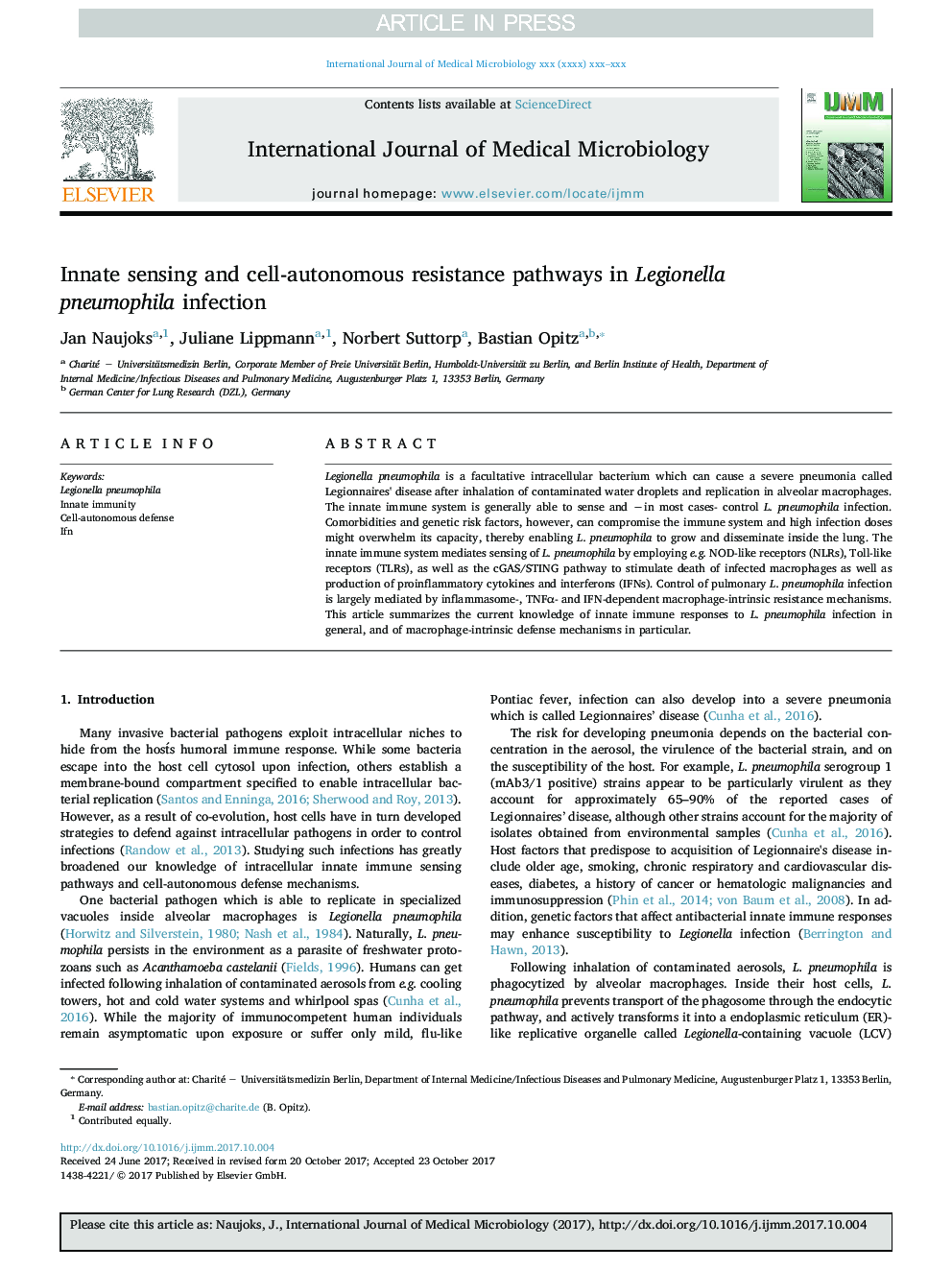| Article ID | Journal | Published Year | Pages | File Type |
|---|---|---|---|---|
| 8385056 | International Journal of Medical Microbiology | 2018 | 7 Pages |
Abstract
Legionella pneumophila is a facultative intracellular bacterium which can cause a severe pneumonia called Legionnaires' disease after inhalation of contaminated water droplets and replication in alveolar macrophages. The innate immune system is generally able to sense and âin most cases- control L. pneumophila infection. Comorbidities and genetic risk factors, however, can compromise the immune system and high infection doses might overwhelm its capacity, thereby enabling L. pneumophila to grow and disseminate inside the lung. The innate immune system mediates sensing of L. pneumophila by employing e.g. NOD-like receptors (NLRs), Toll-like receptors (TLRs), as well as the cGAS/STING pathway to stimulate death of infected macrophages as well as production of proinflammatory cytokines and interferons (IFNs). Control of pulmonary L. pneumophila infection is largely mediated by inflammasome-, TNFα- and IFN-dependent macrophage-intrinsic resistance mechanisms. This article summarizes the current knowledge of innate immune responses to L. pneumophila infection in general, and of macrophage-intrinsic defense mechanisms in particular.
Related Topics
Life Sciences
Biochemistry, Genetics and Molecular Biology
Biochemistry, Genetics and Molecular Biology (General)
Authors
Jan Naujoks, Juliane Lippmann, Norbert Suttorp, Bastian Opitz,
